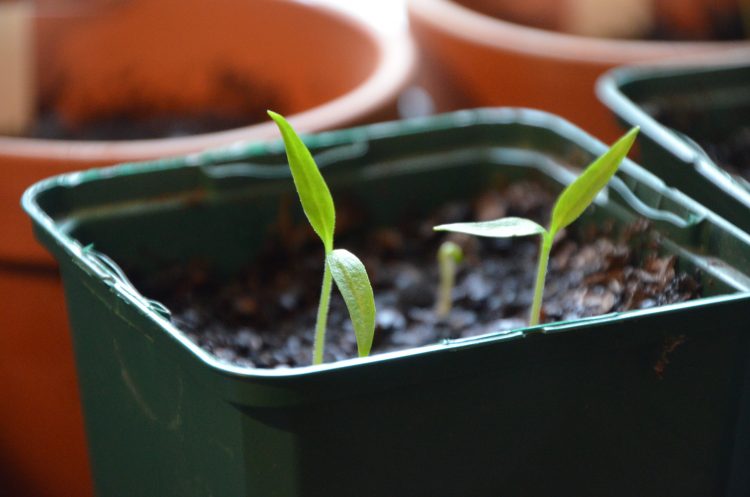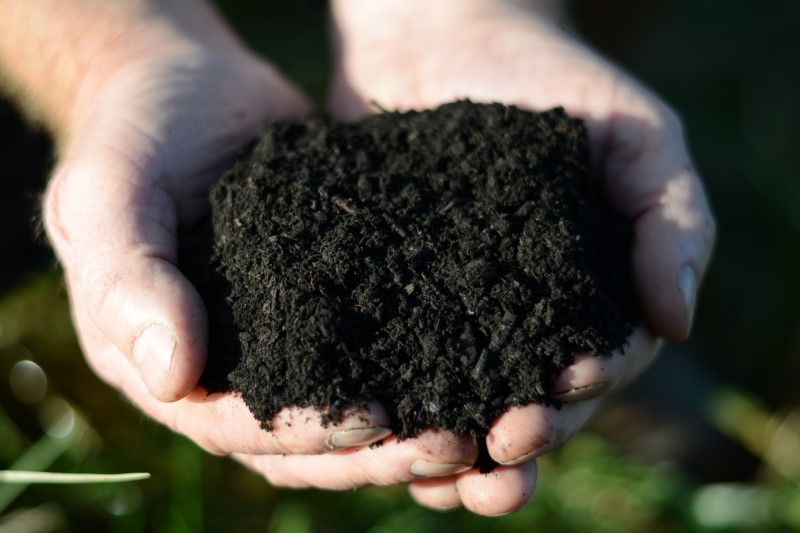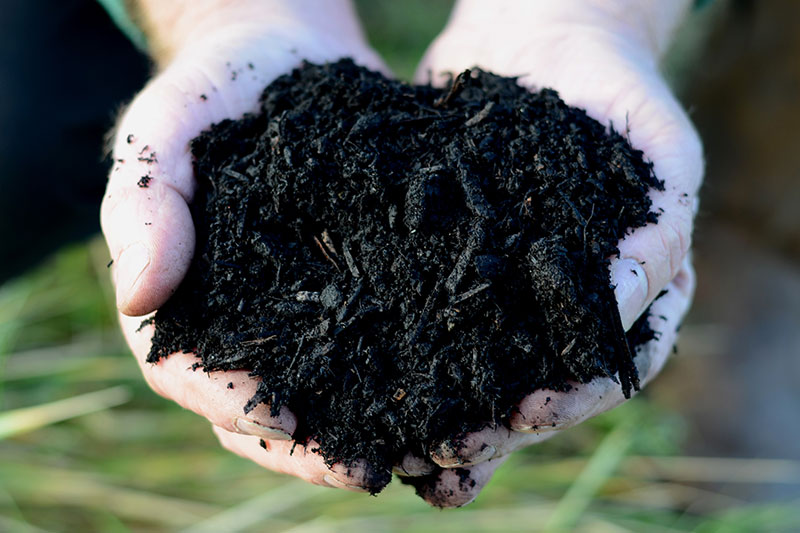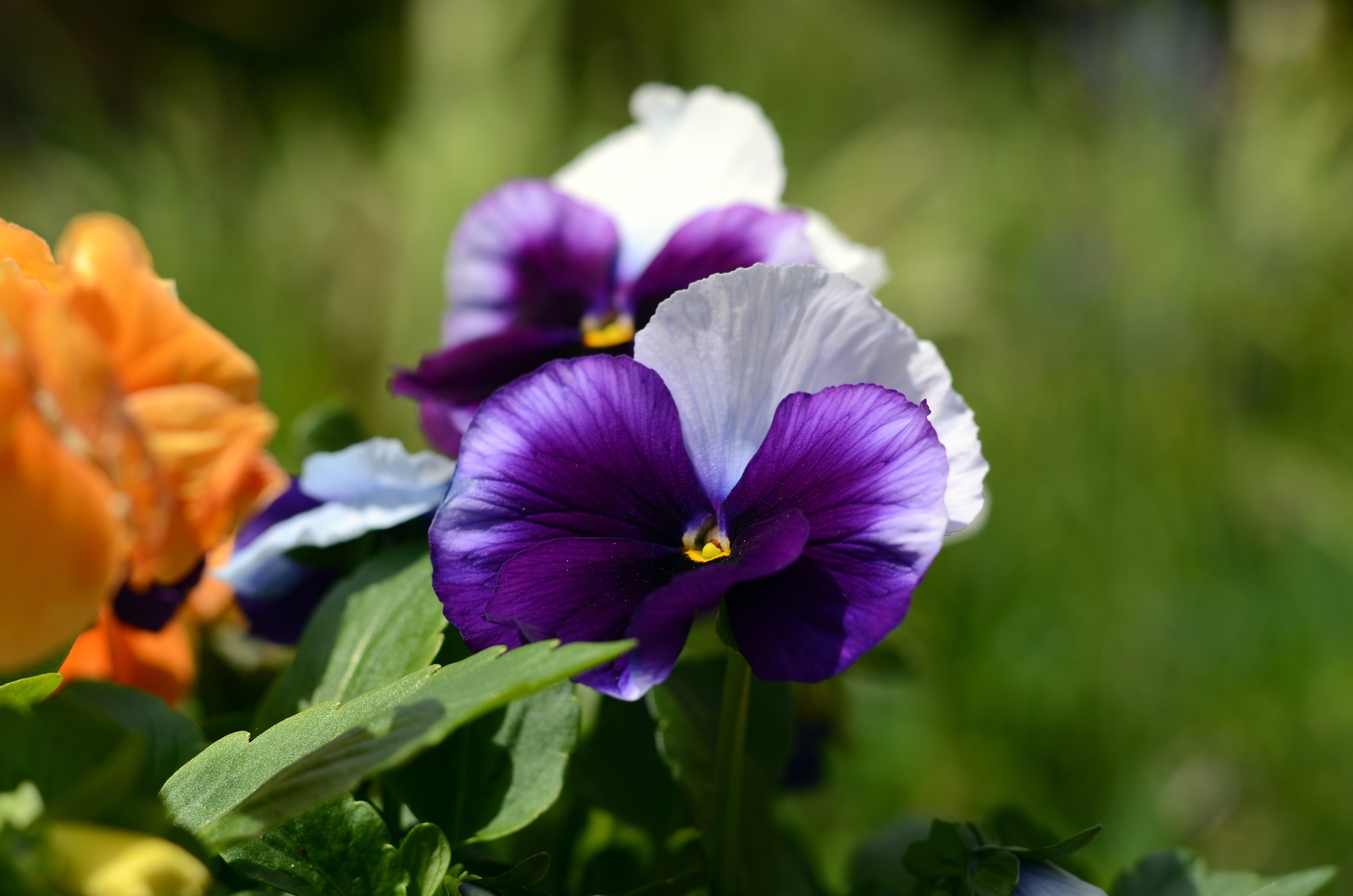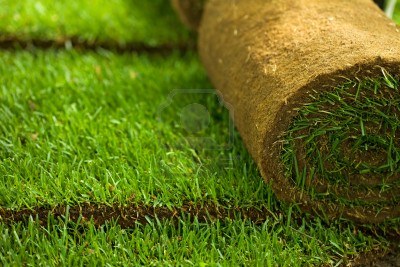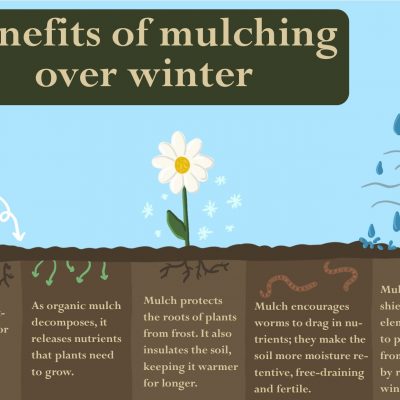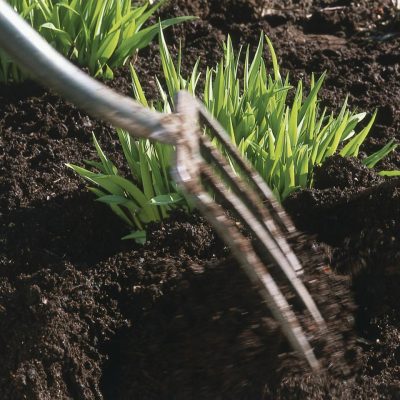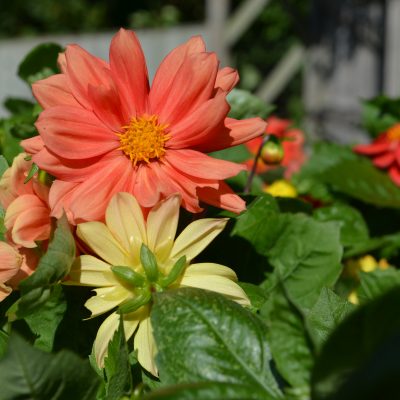Its February: Spring is just around the corner –the days are getting longer, and the daffodils are nearly in bloom! I am feeling optimistic about February (probably because it is the shortest month), despite it still being damp, windy, and cold…
Over the last few weeks, we have done lots of filming around the yard, so I will spend much of this month editing videos for YouTube (exciting!!!). We’re also going to be doing a talk next week at Hail Weston Gardening Group (check out our social media to see how that goes!). Additionally, we have two new starters: a new driver and a new bagging operative, so February for them will be about training and settling in. Anyway, enough about us – here are our tips and ideas for what you can do and plant in your garden this month:
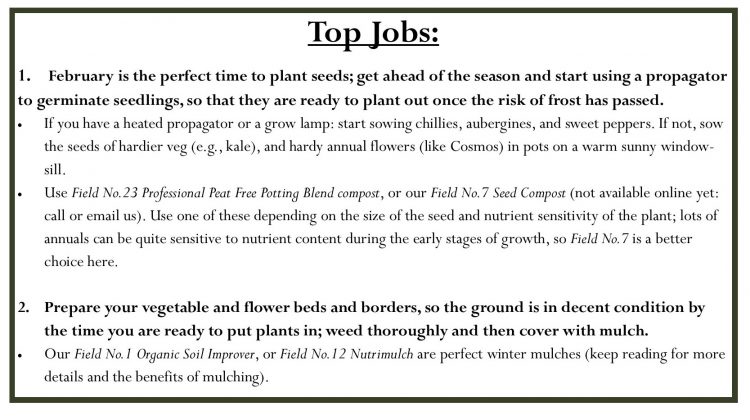
Lawns
Maintenance:
- Mow your lawn if the weather is warm enough (grass starts to grow at temperatures above 5°C). Set your cutting height to its maximum and mow only when the grass is dry.
- Consider leaving areas of your lawn un-mowed for the wildlife; the contrast between the long and the freshly mown grass is quite striking and provides loads of scope for creativity.
New Lawns:
- Start preparing the ground for sowing a new lawn in the spring: fork over the area, weed thoroughly, rake it level, and firm lightly.
- Doing this several weeks in advance gives the soil time to settle, so you have an even surface for sowing in March or April, when the weather is warmer.
- You can lay turf now when the ground isn’t frosty or very wet. Use our Field No.26 Turfing Soil to lay new turf and see the specification sheet for directions.
Greenhouse:
- Gently remove any snow from your greenhouse or conservatories, to prevent damage to the glass and to allow good light penetration.
- Maintain a minimum of 5°C to prevent Fuchsia, Pelargonium and other tender plants being killed by cold. High temps (at least 12°C) are needed for tropical plants.
- Ventilate the greenhouse on sunny days to reduce the risk of fungal infections.
Flowers:
Jobs:
- Preparing beds and borders:
- The ground is gradually warming up and plants can start using the nutrients in the soil to start growing. So, give your borders an early season “boost” by adding some Field No.1 Organic Soil Improver.
- There are many benefits of mulching this time of year (see the image below). One major pro is that the earthworms do all the work for you; they incorporate the organic matter from the Soil Improver into the soil, gradually improving its structure to help roots grow and spread. They also help the soil more effectively hold moisture when things warm up later in the year!
- Remember to clear up weedy beds before mulching; digging up perennial weeds ahead of mulching with Field No.1 will make the task of weeding much less intensive later in the year.
- Containers: check whether your pots need watering, as sheltered pots can miss out on rainfall. Check the compost at hand’s depth to see if it feels dry. Aim to keep pots moist not wet; our Field No.23 Professional Peat Free Potting Blend compost is perfect when planting in containers, as it is made from bark fines and coir. These hold onto water longer and release it more slowly than peat. Check out our page on alternatives to peat-based composts.
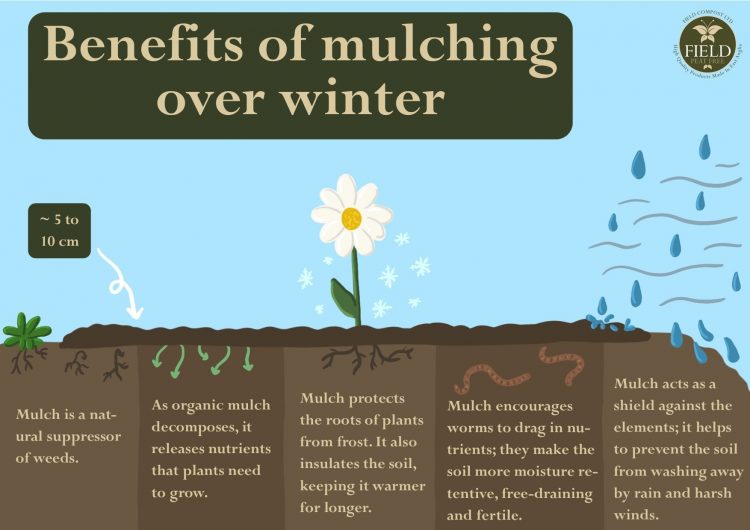
Learn more about mulch, the benefits of mulching, and how to mulch in our most recent blog post: Winter mulching: benefits and tips
To plant:
Use our:
– Field No.23 Professional Peat Free Potting Blend compost if planting flowers in pots.
– Our Field No.21 High Quality Planting Topsoil if creating new raised beds.
– Or our Field No.1 Organic Soil Improver to mulch if planting out at this time of year.
- Lily bulbs: can be planted in pots placed indoors or in a cool greenhouse. Plant bulbs in rich-well-drained soil, and place in a sunny spot.
- Dahlia tubers: both those stored over winter or bought this year can be started into growth. Place tubers in a light, warm place to sprout before planting.
- Cosmos.
- Snapdragons.
- Sweet peas: Can be sown under cloches, in a cold frame, or in a cool room in the house. Any sweet peas sown in autumn can now be potted.
Fruit and vegetables:
Jobs:
- Net fruit and veg crops to keep birds off.
- Chit potato tubers: allow seed potatoes to start sprouting shoots by standing them in trays in a light, frost-free place.
- Start prepping your beds and borders so that the ground is decent enough to start putting plants in; weed thoroughly then cover with loads of Field No.1 Organic Soil Improver, followed by Field No.12 Nutrimulch when planting.
To plant:
Use Field No.23 Professional Peat Free Potting Blend compost.
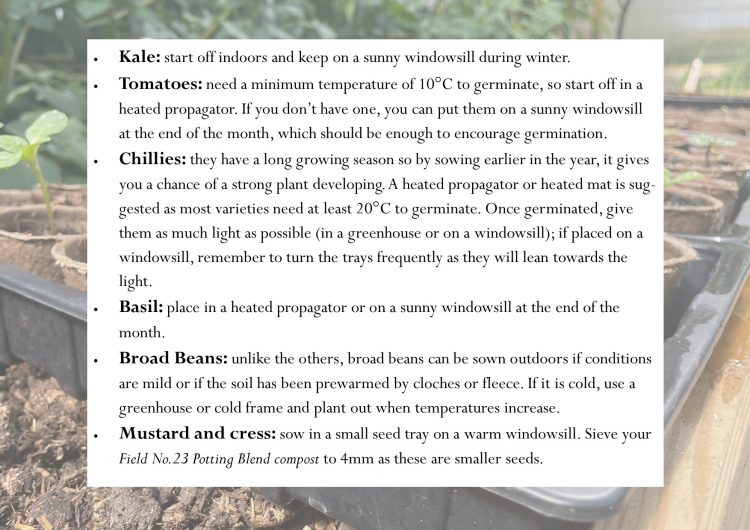
Trees and Shrubs:
Jobs:
- Prune hardy evergreen hedges and renovate overgrown deciduous hedges to promote fresh growth.
- Check tree ties and stakes: replace, tighten, or slacken them where necessary, before new growth begins.
- Mulch and feed shrubs, trees, hedges, and climbers after pruning to give them energy for extra growth. Use our Field No.1 Organic Soil Improver, especially to feed fruit trees and bushes which require plenty of potash. Mulch in doughnut shape around the base of trees and shrubs.
To plant:
Use Field No.1 Organic Soil Improver or Field No.16 Tree and Shrub Soil Improver mixed with soil from the planting pit.
- Continue to plant hedging plants, shrubs, trees, and climbers.
- Also continue to plant roses but avoid planting where they were previously growing to avoid replant diseases.
